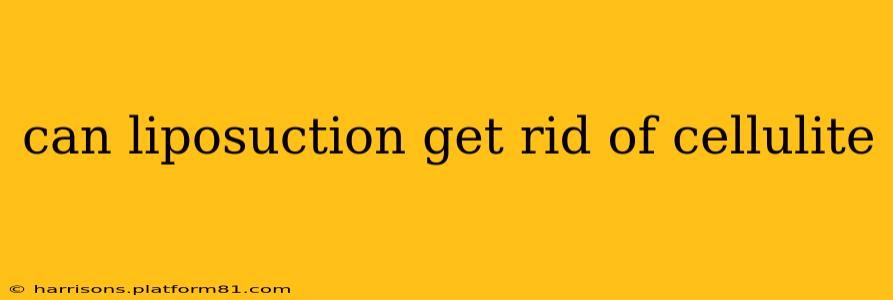Can Liposuction Get Rid of Cellulite? Understanding the Limitations
Cellulite, that dimpled appearance on the skin, is a common concern for many, leading many to explore options like liposuction for removal. While liposuction can improve the appearance of some areas affected by cellulite, it's crucial to understand its limitations and what it can and cannot achieve. This article delves into the relationship between liposuction and cellulite, clarifying misconceptions and exploring alternative treatments.
What is Cellulite and Why Does it Occur?
Cellulite is not simply excess fat. It's a structural issue involving the connective tissue beneath the skin's surface. Fat cells push against these connective bands, causing the characteristic dimpled appearance. Several factors contribute to cellulite formation, including genetics, hormonal changes, and lifestyle factors.
How Does Liposuction Work?
Liposuction is a surgical procedure that removes excess fat deposits from specific areas of the body. A thin cannula is inserted under the skin, and fat cells are suctioned out. This procedure primarily targets subcutaneous fat, the layer just beneath the skin's surface.
Can Liposuction Remove Cellulite? The Short Answer: Not Directly.
Liposuction doesn't directly target the connective tissue responsible for the dimpled appearance of cellulite. While removing excess fat can slightly improve the appearance of cellulite in some individuals by reducing the volume of fat pushing against the connective tissue, it won't eliminate it entirely. The dimpling will likely remain, even after liposuction.
Does Liposuction Make Cellulite Worse?
Liposuction itself won't make cellulite worse. However, uneven fat removal can sometimes exacerbate the appearance of cellulite if not performed by a skilled and experienced surgeon. It's crucial to choose a board-certified plastic surgeon who understands the nuances of cellulite and liposuction.
What are the Alternative Treatments for Cellulite?
Several non-surgical options are available for treating cellulite, including:
- Subcision: A minimally invasive procedure that breaks up the fibrous bands contributing to cellulite.
- Endermology/Cellulite Massage: Massages aimed at improving circulation and lymphatic drainage to reduce the appearance of cellulite.
- Radiofrequency treatments: Heat treatments that stimulate collagen production to improve skin tone and texture.
- Laser treatments: Various laser technologies aim to reduce fat cells and tighten the skin.
- Topical creams and lotions: Many products claim to reduce the appearance of cellulite, although their effectiveness varies.
What are the Risks of Liposuction?
Liposuction carries risks like infection, bleeding, and uneven results. It's vital to discuss these risks with your surgeon before proceeding. It's also important to have realistic expectations regarding the outcome of the procedure.
Is Liposuction Right for Me if I Have Cellulite?
If your primary concern is cellulite, liposuction is likely not the ideal solution. While it might offer a marginal improvement in some cases, it won't eliminate cellulite. It's best to consult a dermatologist or plastic surgeon to discuss your options and explore treatments that specifically target cellulite reduction. They can assess your individual needs and recommend the most appropriate course of action.
How much does liposuction cost?
The cost of liposuction varies greatly depending on the extent of the procedure, the surgeon's fees, and geographic location. A consultation with a plastic surgeon is the only way to determine a precise cost estimate for your individual needs.
This information is for educational purposes only and is not a substitute for professional medical advice. Always consult a qualified healthcare provider before making any decisions related to your health or treatment.
